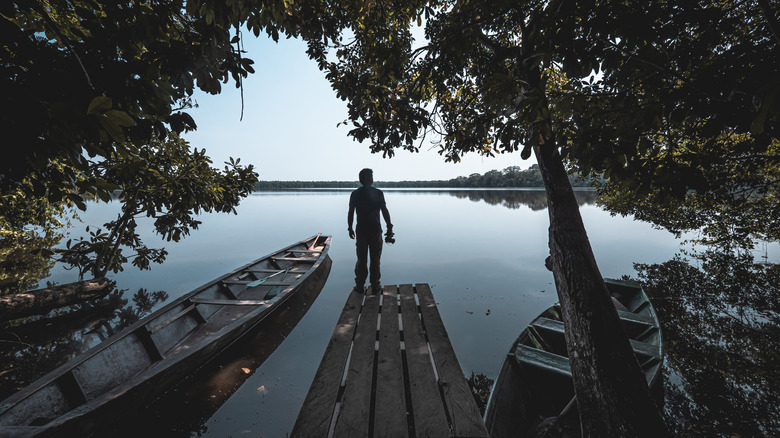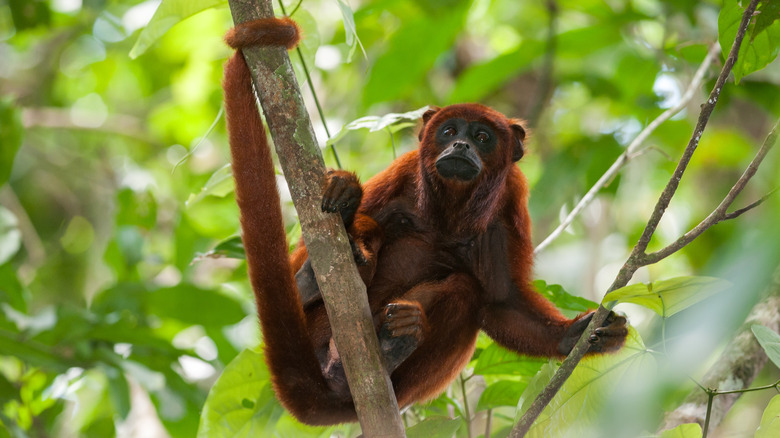Where biodiversity meets beauty
With a registered 1,200 species of butterflies, more than 632 species of birds, 180 species of fish, and 169 species of mammals, the Tambopata National Reserve offers plenty of unique nature encounters. Not only are there plenty of boat tours available in the region that’ll take you to must-see spots like Lake Sandoval and Lake Valencia, but they’re also a great opportunity to come up close and personal with the reserve’s native inhabitants — from tapirs, capybaras, river otters, and sloths to the more elusive ocelots and jaguars.
And don’t forget to look up! With howler monkeys, titi monkeys, and squirrel monkeys swinging through the trees, as well as macaws gliding through the sky, there’s no shortage of action as you make your way through the reserve.
Beyond the wildlife, the Tambopata National Reserve is also home to small settlements of the Ese Ejja and Pukirieri indigenous tribes, with the former collaborating alongside park rangers to educate visitors on the importance of conservation and maintaining harmony with nature.
Visiting Tambopata National Reserve

Traveling to the Tambopata National Reserve will take some planning. First things first, you’ll want to fly into Lima or Cusco — these two major cities are your starting points. From there, you can hop aboard a direct flight to Puerto Maldonado — the capital city of the Madre de Dios region and your gateway to the Amazon. If you’re traveling from Lima, the flight should take approximately one and a half hours; meanwhile, from Cusco, the flight is a breeze at just 55 minutes.
Once you’re in Puerto Maldonado, you can speak to one of the local travel agencies who will arrange a river transport that will take you to your lodge where you can plan your visit to the reserve. Tickets to visit the Tambopata National Reserve cost about $8 for foreign visitors, and all trips must be planned ahead through an authorized travel agent only.
In terms of what to pack, keep in mind that the Amazon is typically wet, hot, and humid throughout the year. Additionally, packing light is also key, especially since you’ll likely be moving around a lot. That said, you’ll want to bring protective clothing — think long-sleeve shirts made from quick-dry material, a light rain jacket, hiking pants, trekking boots, a hat, and mosquito repellent. Other good-to-have items include a flashlight, reusable water bottle, day pack, and even a basic first aid kit you can carry along with you.

